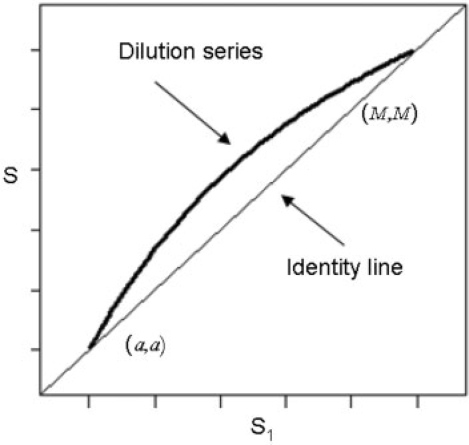

A serial dilution is a series of stepwise dilutions, where the dilution factor is held constant at each step.Ī serial dilution is the stepwise dilution of a substance in solution. How do you calculate the serial dilution?ĭilution calculations can be performed using the formula M 1 V 1 = M 2 V 2. In microbiology, serial dilutions (log dilutions) are used to decrease a bacterial concentration to a required concentration for a specific test method, or to a concentration which is easier to count when plated to an agar plate. What is the purpose of serial dilution in microbiology?ĭilution is the process of making a solution weaker or less concentrated.

Serial dilutions are used to accurately create highly diluted solutions as well as solutions for experiments resulting in concentration curves with a logarithmic scale. What is serial dilution and why is it used?Ī serial dilution is the stepwise dilution of a substance in solution. The accuracy ratio of the plate improved with more mix cycles, improving from 1:1.85 to 1:2.01. The accuracy ratio is an average of the concentration of the diluted column compared to the previous column-a perfect serial dilution has an accuracy ratio of 1:2.00 across the entire plate. So, preparing a concentrated stock solution that may require a serial dilution involving transfers of larger volumes will reduce the measurement uncertainty of the final solution concentration and, therefore yield a more accurate final concentration. Is serial dilution more accurate than direct dilution? One of the most common series doubles the dilution factor with each transfer (1:2, 1:4, 1:8 …). A small amount of serum or solute can be serially diluted by transferring aliquots to diluent. Serial dilution is a common technique used in many immunologic procedures. A ten-fold serial dilution could be 1 M, 0.1 M, 0.01 M, 0.001 M … Why are serial dilutions more accurate? What is the principle behind serial dilution? Usually the dilution factor at each step is constant, resulting in a geometric progression of the concentration in a logarithmic fashion. What is dilution and serial dilution?Ī serial dilution is the stepwise dilution of a substance in solution. Each successive standard uses a small portion of the previous standard, which is diluted by solvent to generate the next calibration standard in the series.

The more evenly spaced the calibration standards are over this range, makes the results of the analysis more reliable. Assays of antibody only show parallelism if the affinity of the antibodies in the sample corresponds exactly with those in the assay calibrators, since such assays reflect both the concentration and affinity of the antibody. Gravimetric, independent dilutions are preferred to serial dilutions. Which gives more accurate results serial dilutions or independent dilutions? In biochemistry, serial dilution is used to obtain the desired concentration of reagents and chemicals from a higher concentration. Serial dilution is used in microbiology to estimate the concentration or number of cells/organisms in a sample to obtain an incubated plate with an easily countable number of colonies. Controlled volumes of the same concentrated stock solution are transferred directly to individual assay wells to achieve the desired end concentration. Direct dilution follows a simpler process. The direct dilution method uses far less sample than the serial dilution method. What is the main difference between serial dilution and direct dilution? For example, if you take 1 part of a sample and add 9 parts of water (solvent), then you have made a 1:10 dilution this has a concentration of 1/10th (0.1) of the original and a dilution factor of 10. A Serial dilution is a series of dilutions, with the dilution factor staying the same for each step. What is the difference between series and serial dilution? 9 How do you calculate the serial dilution?.



 0 kommentar(er)
0 kommentar(er)
